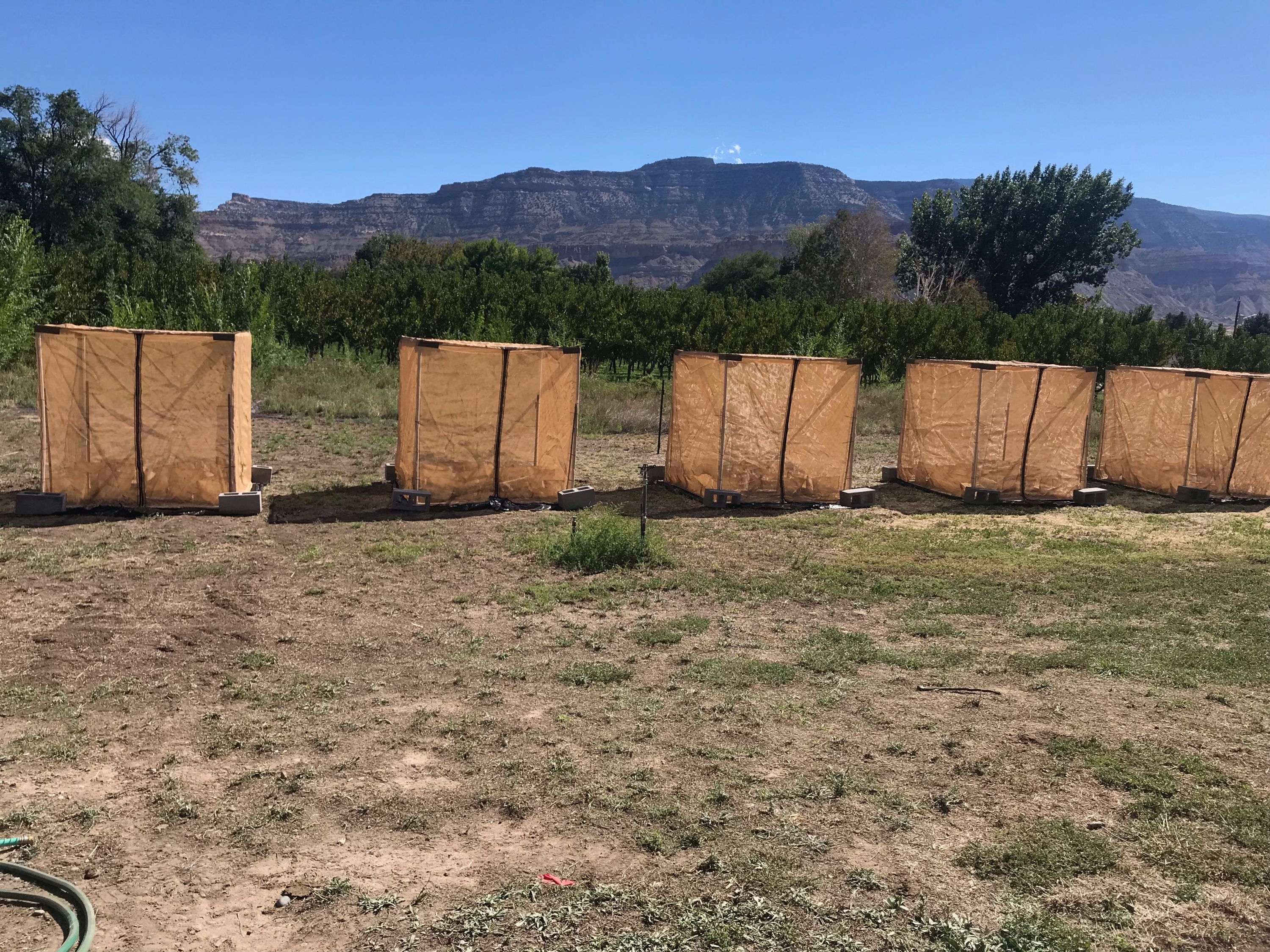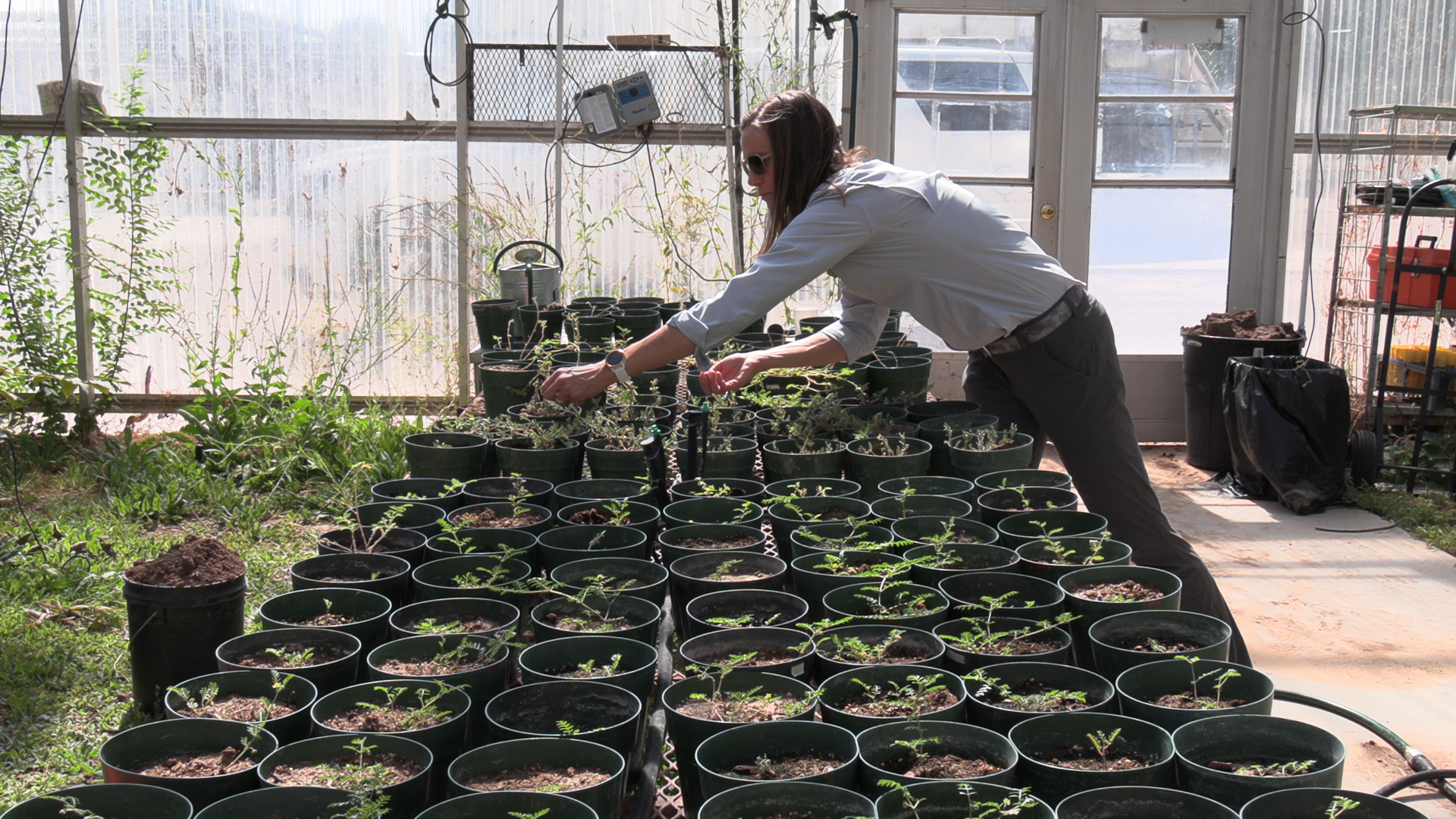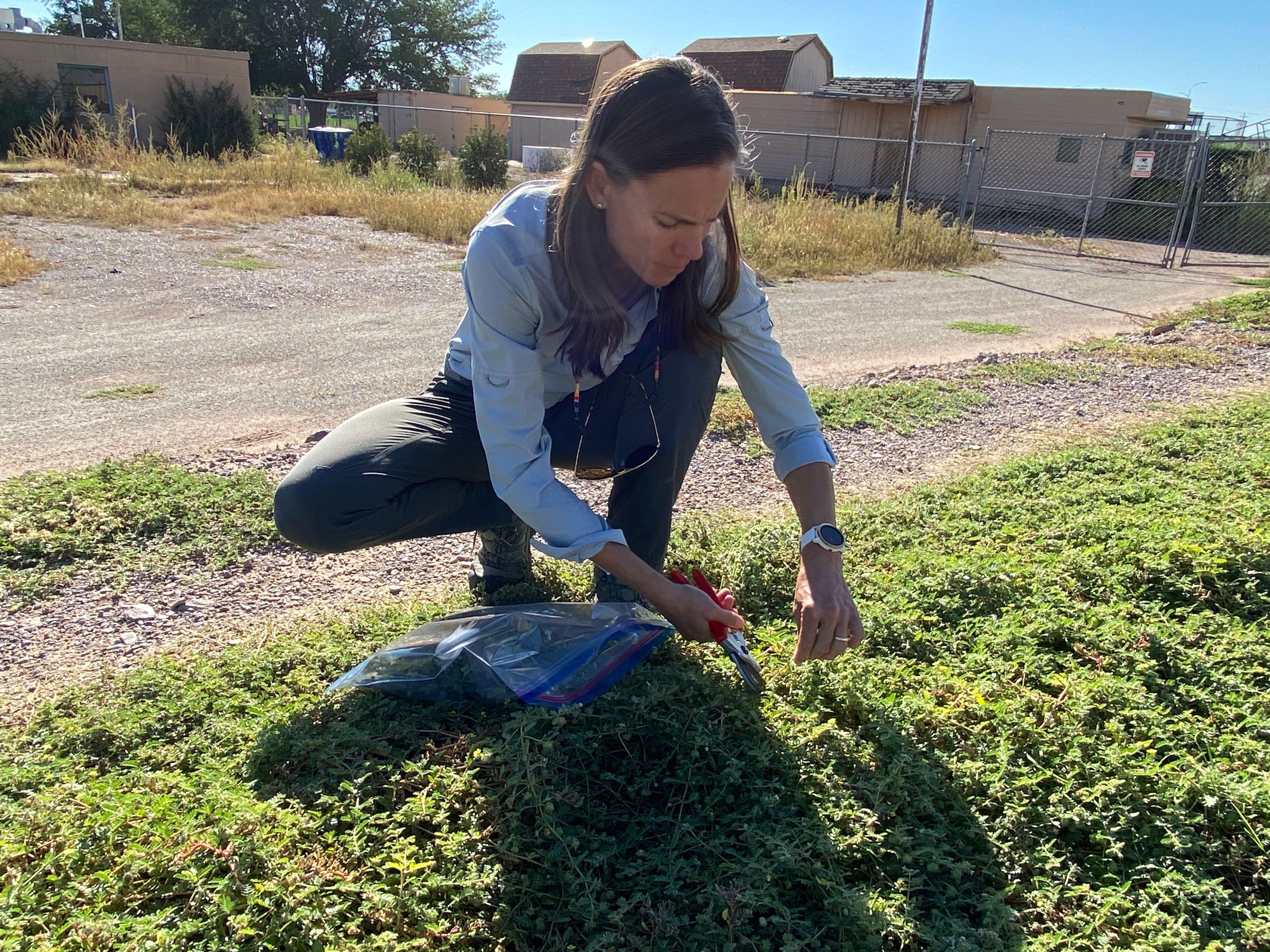Research Tests if Warm-Weather Weevils Can Boost Biocontrol of Puncturevine

Call it puncturevine, goatheads, devil’s thorn or whatever creative collection of expletives you mutter after sitting, kneeling or stepping barefoot onto it, Tribulus terrestris is one unpleasant plant.
A native of the Mediterranean region, the spiky-seeded broadleaf annual weed is found throughout the United States and into Canada. Two biocontrol insects – stem-feeding and seed-feeding weevils – were introduced into this country in the 1960s but generally failed to establish in colder climates.
Now, with funding from the Western Integrated Pest Management Center, a researcher in New Mexico is measuring the cold-hardiness of weevils from different climactic zones to see if biocontrol efforts in cool northern climes could be boosted by importing warm-weather weevils from the southern deserts.
“There are a lot more of these weevils in southern New Mexico than in more northern places,” explained Kristen Bowers, from the Department of Entomology, Plant Pathology and Weed Science at New Mexico State University in Las Cruces. “So we’re wondering – which no one has ever tested – is whether it’s because the southern weevils can’t handle colder climates?”
That hypothesis says the weevils just aren’t cold-hardy and die out during cold winters so populations build up slowly from the few survivors the following summer. If that’s the case, weevils will continue to be largely ineffective biocontrol options in all but the warmest regions of the West.
The other hypothesis, though, is more hopeful.
“It could be that we have more weevils in southern New Mexico because the populations are able to build up over a longer period of time,” Bowers said. “We have multiple generations of weevils, whereas in Colorado and northern places there is only one generation per year and the population is limited by that and not so much by the cold of the winter temperature.”

If that’s the case, southern weevils could be collected and shipped north, boosting populations in those areas so they build up faster in the summer and eat more puncturevine. (As with any biocontrol scenario, even effective weevils wouldn’t eradicate puncturevine but could reduce its prevalence and slow its spread.)
The time-honored poke test
To document the ability of the weevils to survive through the winter, Bowers and her team have collected puncturevine weevils from southern New Mexico, northern New Mexico and western Colorado and will have all three populations overwinter in all three locations.
“We place 10 live weevils onto a potted puncturevine plant sealed in a mesh bag,” Bowers said. “Then we place 21 of these individually bagged potted plants into large walk-in cages.”
There are five cages at each of the three testing sites and inside those cages the pots were buried in shallow holes to better mimic the actual conditions of wild-growing puncturevine. The team also installed temperature loggers in some of the potted plants and in and around all the cages to document conditions.
Bowers and her team will visit the sites every month from October through April, collecting plants with weevils from each of the three populations from each of the three overwintering sites.
“We’ll open the bags and see how many live weevils there are,” Bowers said. “We’ll warm them up and do the time-honored poke test to see who wakes up.”
In addition to the field studies, Bowers will also be using a cold-plate to test the cold tolerance of the three different weevil populations at different temperatures and durations.
“That lab study, paired with evidence of their field capacity to overwinter, should give us a good idea of what these insects’ capacity to withstand cold temperatures really is,” Bowers said.

If the southern weevil population doesn’t fare any better than its northern cousins, then we’ll have to keep managing puncturevine with our existing tools and keep the sealant topped up in our mountain bike tires.
But, if they prove to be hardier than we’ve thought, it could give land managers an improved biocontrol option for managing a very unpleasant weed.